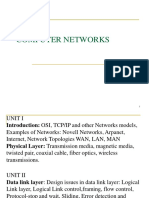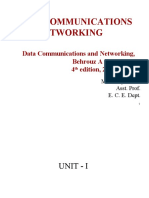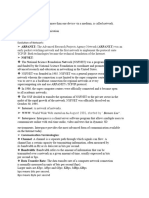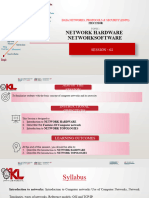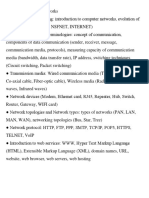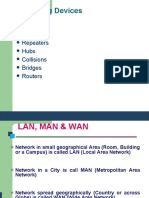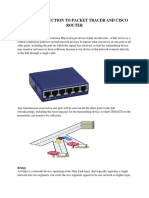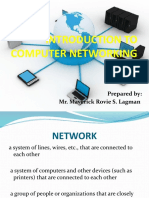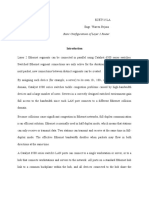0% found this document useful (0 votes)
24 views32 pagesLecture 1 - Introduction
The document provides an overview of networking principles, including types of networking devices such as end-user devices, intermediary devices, and their functions. It discusses various network topologies like bus, ring, star, and mesh, along with the advantages and disadvantages of each. Additionally, it explains the roles of LANs and WANs in facilitating communication within and between networks.
Uploaded by
Mohammed AlkhatibCopyright
© © All Rights Reserved
We take content rights seriously. If you suspect this is your content, claim it here.
Available Formats
Download as PPTX, PDF, TXT or read online on Scribd
0% found this document useful (0 votes)
24 views32 pagesLecture 1 - Introduction
The document provides an overview of networking principles, including types of networking devices such as end-user devices, intermediary devices, and their functions. It discusses various network topologies like bus, ring, star, and mesh, along with the advantages and disadvantages of each. Additionally, it explains the roles of LANs and WANs in facilitating communication within and between networks.
Uploaded by
Mohammed AlkhatibCopyright
© © All Rights Reserved
We take content rights seriously. If you suspect this is your content, claim it here.
Available Formats
Download as PPTX, PDF, TXT or read online on Scribd
/ 32

